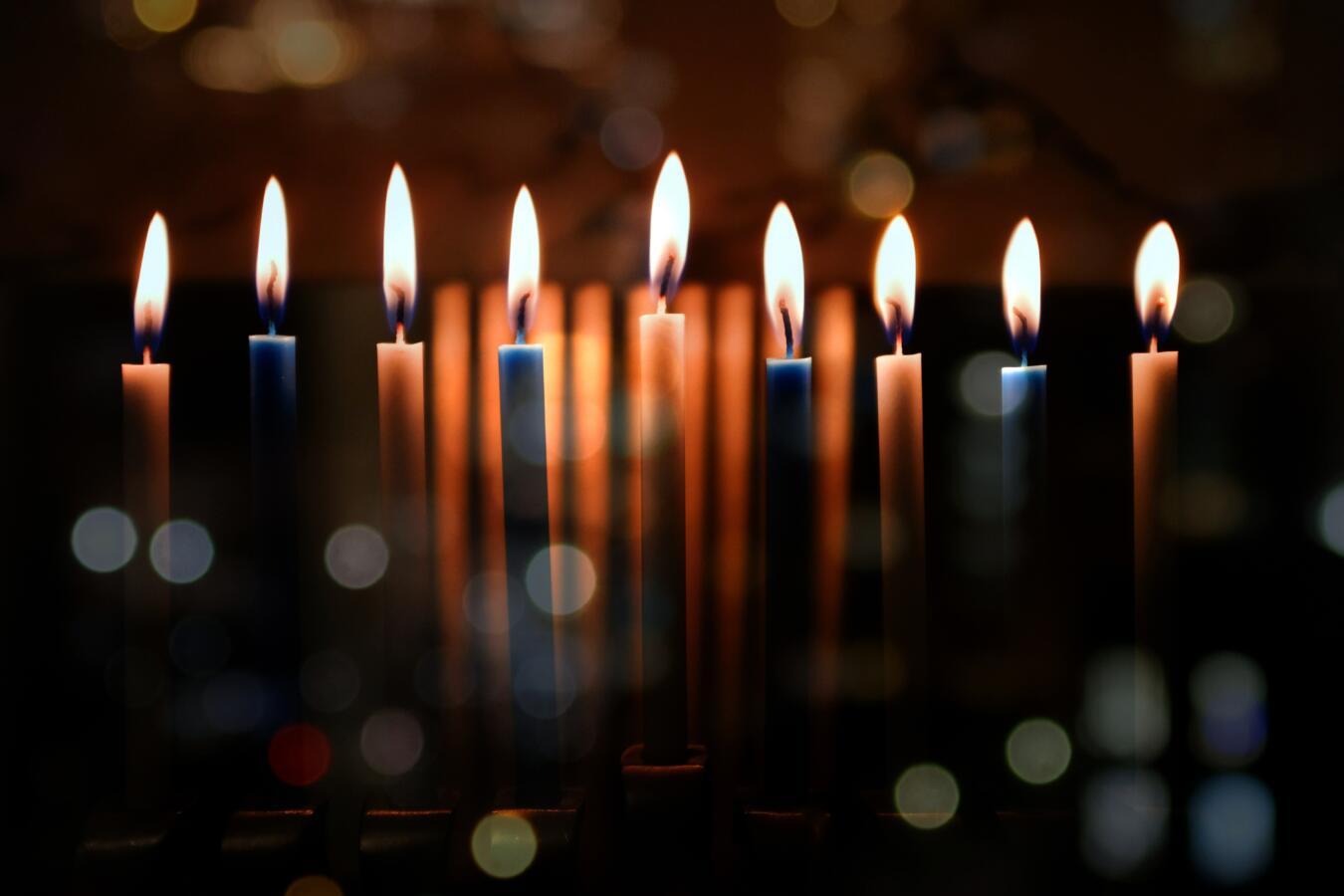Have you ever read a book and thought it would make an amazing movie? Here’s my little secret: I have not only done this, but on three separate occasions I have reached out to an author to find out if the movie options were available.
The first time was for Bruce Coville’s Magic Shop series, which was like an early version of Harry Potter. Mr. Coville was gracious enough to respond, but alas his books have still not been made into a film.
The second time was after reading Alan Lightman’s Einstein’s Dreams, an incredible collection of short stories that imagine a world operating under different conceptions of time. This book was made into a play, but the movie has never happened.
Finally, I emailed Eric Kimmel, whose book Hershel and the Hanukkah Goblins remains for me and many others a Hanukkah favorite. It’s still not a movie, but Kimmel responded quite graciously. I’ll tell you about his response in a minute, but first some background for those who aren’t familiar with this work.

Help us keep Jewish knowledge accessible to millions of people around the world.
Your donation to My Jewish Learning fuels endless journeys of Jewish discovery. With your help, My Jewish Learning can continue to provide nonstop opportunities for learning, connection and growth.
Hershel is a peripatetic Jew who happens upon a Jewish village during Hanukkah and discovers that no one is lighting Hanukkah candles. The villagers explain that a group of goblins have been tormenting the village and the only way to stop them is to get their king to light Hanukkah candles himself.
Ever the brave adventurer, Hershel treks to the synagogue. Each night of Hanukkah, a different goblin tries to stop him from lighting candles and each night Hershel outsmarts them. He convinces one goblin he’s super strong by crushing an egg, which he tells the goblin is a rock. Another goblin is thwarted when Hershel, playing to the goblin’s greed, gets the goblin’s hand stuck in a pickle jar.
Finally, Hershel is visited by the king of goblins. The lights in the synagogue are all extinguished when the imposing silhouette of the king appears.
“It is I, the king of the goblins,” the imposing figure announces.
“Don’t be silly, you’re one of the boys from the village,” Herschel replies. “You’re trying to scare me.”
Frustrated, the king tries to convince Hershel that he is, in fact, the king of the goblins. And here is where Hershel makes his move.
“It’s too dark,” Hershel explains. “If you want to convince me, you need to make it brighter.”
So the king lights some candles. But unbeknownst to him, these are Hanukkah candles. And with that, the goblin’s reign of terror is ended.
It’s a cute enough story and remains a part of my nostalgic Hanukkah memory. But there is also a rather profound lesson contained within.
Rather than ignore the goblins as the townspeople did, Herschel confronts them, parrying their efforts to stop him from lighting the candles. Instead of surrendering to the darkness, he transforms the obstacles that confront him into sources of light. As Rav Tzadok of Lublin has written, “In the very place you struggle most, is the very area that contains the most potential for spiritual transformation.”
I shared this message with Eric Kimmel. His response was powerful:
I didn’t write Hershel with a particular message in mind. My task, as I see it, is to tell a story. Readers will create their own understandings that grow out of their own experiences and needs. Your response is a good one, and valid. One point I hoped the story would make is that Hershel defeats the goblins without magic or superpowers. If kids think superheroes are going to save the day, we’re lost. Those folks don’t exist. All we have are the powers within us.
I love this response. But the notion of transforming darkness into light is, in fact, a superpower of sorts. Too often our instinctive response to pain and suffering is simple avoidance. We avoid tough conversations, tough relationships, tough situations of all kinds that have the potential for pain. We distract ourselves and focus on other things.
But life, by definition, involves pain. And Hanukkah reminds us that there’s another way of dealing with it. Instead of remaining in the comfort of light, Hanukkah beckons us to confront the darkness. Instead of fleeing from our proverbial goblins, we can transform them. And what is a superpower if not the ability to reach beyond ourselves and transform the darkness into light? The superpower of Hanukkah is learning to illuminate the dark places and find the blessing within them.
“Sometimes, all the pain and tears lift you to a much higher and deeper joy when you say to the bad times, ‘I will not let you go until you bless me,’” wrote Rabbi Jonathan Sacks.
This is the power that Hanukkah reveals. And this is the profound message of Hershel. We grab whatever darkness, whatever goblins, whatever pain that lingers in our lives and we insist, “I will not go until you bless me.” And like the king of the goblins, the source of our pain can become the catalyst for profound illumination.
This article initially appeared in My Jewish Learning’s Shabbat newsletter Recharge on Dec. 4, 2021. To sign up to receive Recharge each week in your inbox, click here.



